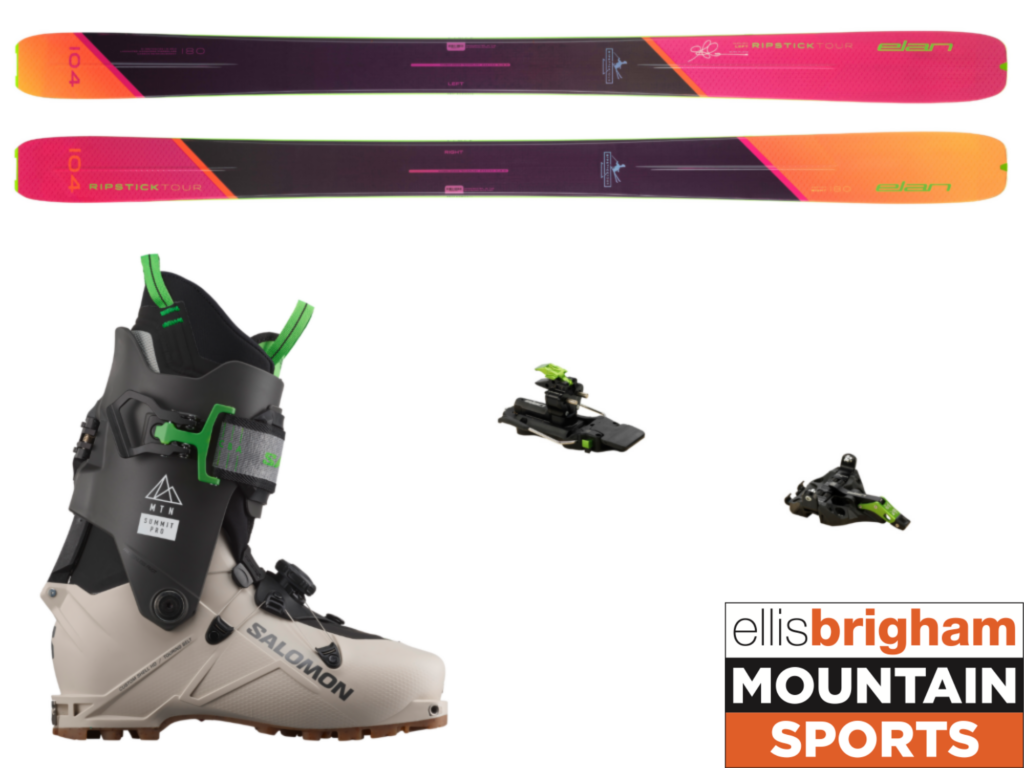Perfect Setups – Get Set Up for Success with the Experts at Ellis Brigham
Ellis Brigham explains how to avoid mistakes when pairing your gear to ensure you have your dream setups for ripping this winter
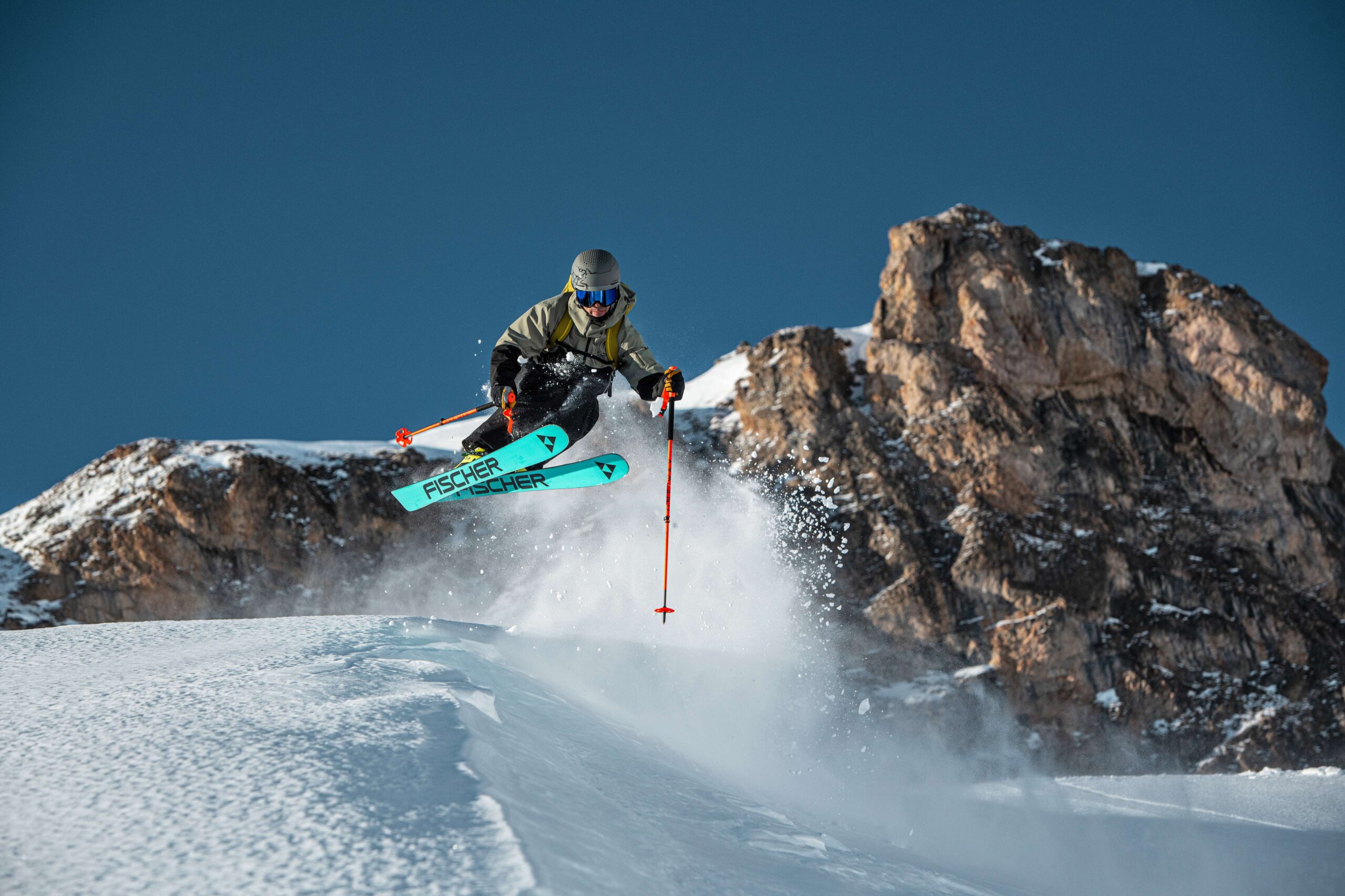

Happy gear purchases are all about compatibility, say Ellis Brigham’s ski hardware pros and buyers.
“Speak to an expert to go through the options and get it right, because it isn’t straight forward.”
Here’s what the Ellis Brigham bunch have to say about the dream Freeride, Freestyle, Alpine and Touring setups.
Freeride is the meeting of the alpine and backcountry categories, a fluid transition between fixed bindings, powerful skis and heavier boots into equipment built for going up as well as down with releasable heels, walk modes and different flex patterns.
Where you sit within this mix affects the exact gear you need. More power, more lifts used, and faster downhill speeds means heavier kit; more time spent exploring away from lifts requires lighter equipment and more versatility. Thankfully there is something for everyone, but compatibility is crucial, especially between ski and binding to make sure they function safely.
COMMON MISTAKES If you want a freeride ski then it’s time to think of it as a second pair (or possibly more). Don’t buy something for epic conditions but try to also make it an everyday piste option – that’s what all-mountain models are for. Freeride is about pushing the boundary a bit further; yes, they can still rip on groomed runs, but focus on models that shine in soft and deeper snow. At the same time, do be realistic about where you’re going to use the kit and think about your own specific requirements. It’s all too easy to dream of bottomless, feather-light powder and want that 120mm+ waist ski when actually the right gear is more rounded (= not quite as wide), and the likely conditions are boot or knee-deep when you do find it.
EXPERT ADVICE Think hard about what the right binding will be for what you’re doing now and what you aim to achieve. If the reality is mainly lift-served skiing, then you don’t need a pin binding – maybe an alpine or hybrid model will be what you want. Speak to an expert to go through the options and get it right, because it isn’t straightforward.
DON’T BE TEMPTED TO…Buy boots based solely on what is written and talked about as the ‘new, exciting gear’. Do your research and understand the features you need, compatibility and rough weight, but do also work with your boot fitter, listen to your feet, and ignore your eyes.
MAKE SURE YOU… Buy some skins if you’re getting a binding with a tour function. If you don’t then you have either wasted the potential or just bought the wrong item in the first place. Factor them into your budget as well as a compatible crampon.
2023 DREAM SETUP
Nordica Enforcer 104 Unlimited
Armada Shift 13
Scarpa 4-Quattro XT
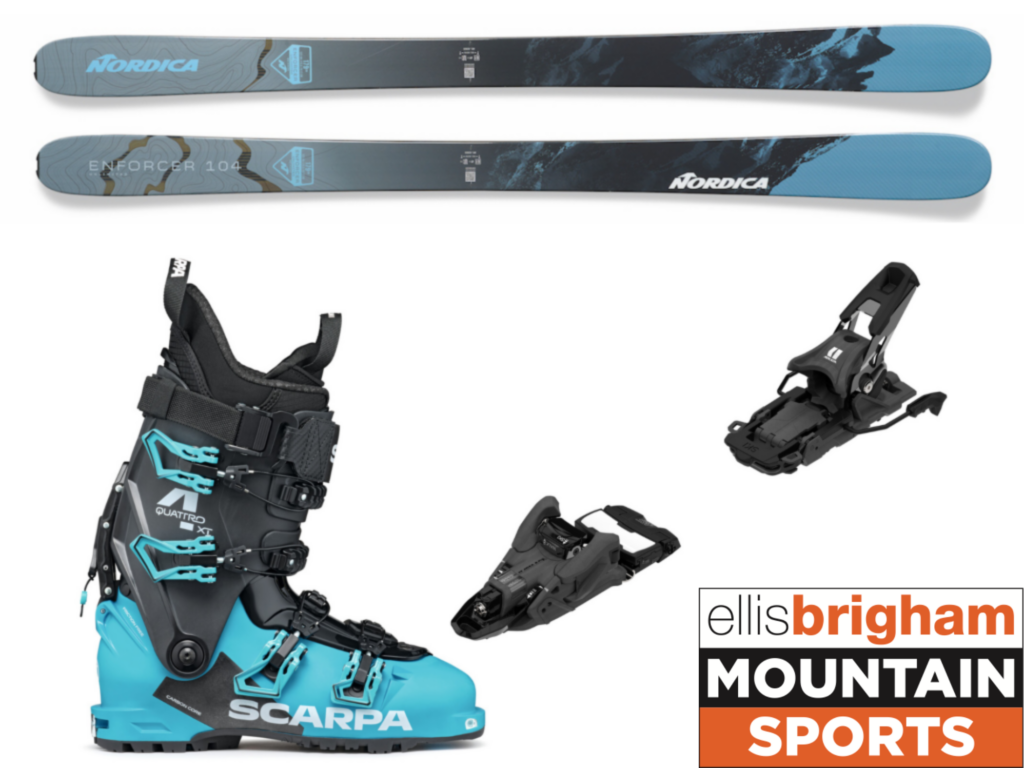
Freestyle is a wide and varied category, bound together by a freedom of expression. The skiing is done in a wide range of environments from terrain parks, indoor snow and artificial slopes, to urban areas and anywhere on a mountain. Skis are twin tipped and less interested in edge hold and more about flex and feel.
COMMON MISTAKES Don’t be obsessed with getting the boots your favourite skiers are using (this always seems to be a Full Tilt, now called K2 FL3X). The common question in store being, “I want to buy Full Tilt, can you fit them for me?” without considering if they’ll even be close to a good shape. They may work for Henrik Harlaut, but it’s very unlikely that your feet, legs and biomechanics the same as his. Buy the boots that fit and function the best for you, and, yes, there is a reasonable chance it could be a FL3X model.
EXPERT ADVICEThink about where and how you want to use your skis. Freestyle models vary depending on where they will be used and what kind of skiing you’ll be doing. Do you want something softer and more comfortable with pressing? Something stiffer for more pop? Will it be exclusively for park or will you be spending most time on natural features and softer snow? Think about how it will match your skiing.
DON’T BE TEMPTED TO… Skimp on boots. There’s going to be a lot of shock and impacts going through your feet and shins, so you want a boot that fits well to hold your feet comfortably. Invest in a good insole that supports your foot and spreads out the pressure.
MAKE SURE YOU… Get it all set up professionally. Speak to someone in a shop and talk through the right products, but also the best binding mounting position on the skis, and make sure that your boots are properly set up.
2023 Dream Set Up
K2 Poacher
Look Pivot 15 Raw
K2 FL3X Revolver Pro
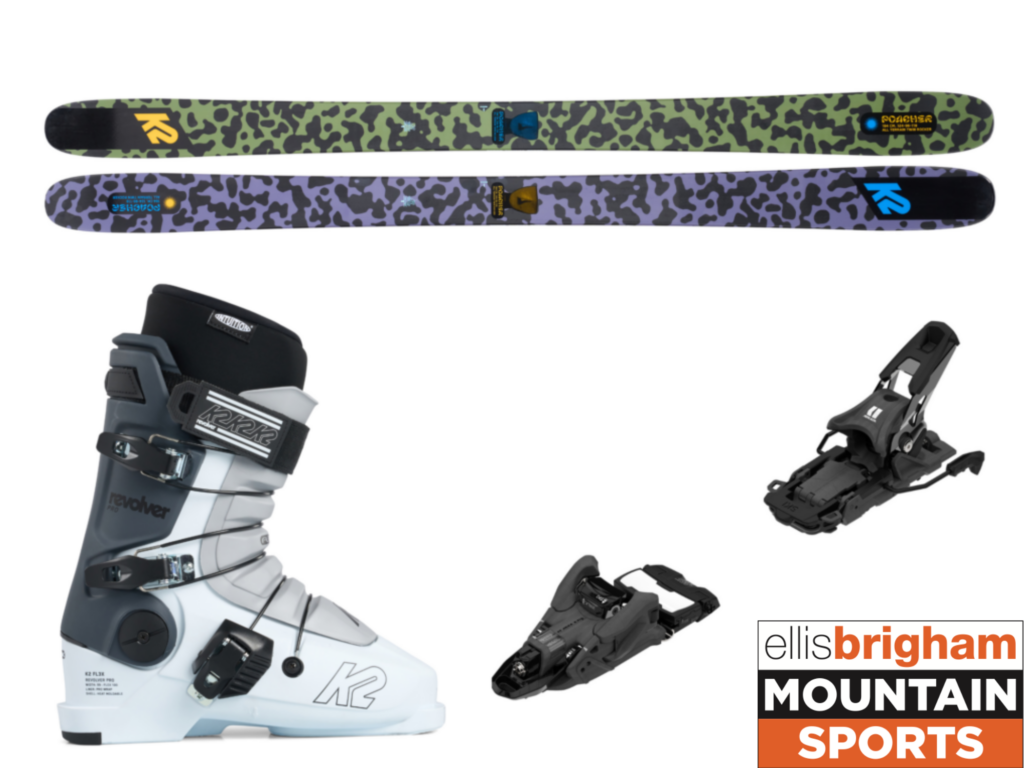
Alpine is easily the biggest category and is often split further into Race, Piste and All-Mountain, with All-Mountain itself being a bit of a monster selection that covers a range of products. What binds all this together is fixed bindings, the use of lifts and plenty of pistes, although this doesn’t mean skiing only groomed snow, as plenty of alpine skiers spend a lot of time off-piste too.
Generally, the boots will be fixed, though walk mode options are making something of a return – this gives them stiffer spines for better support and energy transmission. The bindings will not have tour modes, so power transfer is more direct and, as there are less parts, they’ll be significantly cheaper. The skis will be narrower for faster edge changes, and generally stiffer compared to similar ability skis in other categories, as this provides more response and control.
COMMON MISTAKES Probably the biggest mistake people make when buying alpine gear is over-estimating their abilities or use expectations i.e. saying they ski black runs, when in fact they might have skied one run black run and they actually have much more fun cruising blues and reds. The key to happy gear purchasing is selecting the right shape and flex of boot and choosing skis that match your ability, size, skiing style, terrain preference and aspirations.
EXPERT ADVICE Somewhat contrary to the above, don’t be afraid to get equipment that is pitched slightly better than you think you currently are. Having your own gear will help you improve faster than you expect, and having something to push you a little will also last longer. The only exception to this if you are truly content at the level you ski.
DON’T BE TEMPTED TO… Buy your boots online – as the cliché goes, the internet can not fit your ski boots. Visit a shop with a proper selection of fits and trained boot fitters – it will make selecting the correct model so much easier, and ultimately this will make you ski better and more comfortably, and ultimately have more fun. Having bought from a shop you can also get any adjustments done, either during fitting or even after skiing in them.
MAKE SURE YOU… Think about how and where you ski and match your ski gear to that. Buy once, buy right.
2023 Dream Set Up
Nordica Belle DC 72
Salomon S/PRO Alpha 100
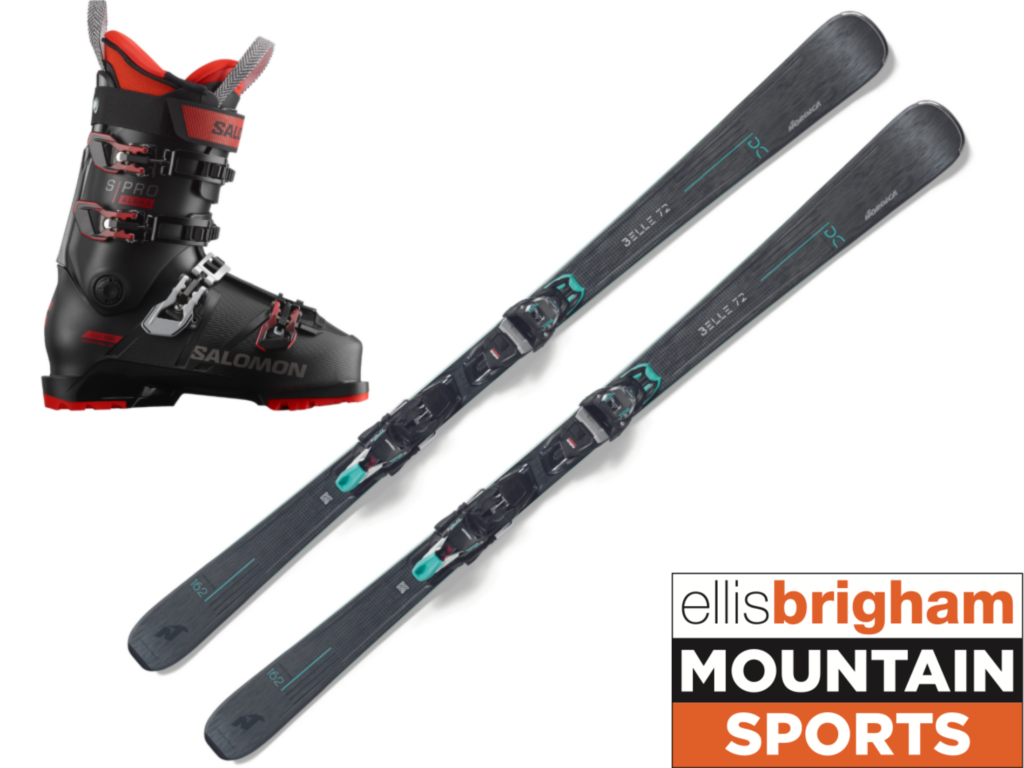
This is an area of skiing that boomed during lockdown. It’s a category that has seen huge improvements in equipment with lighter, stronger, and easier to use gear. This has also meant more specific options, so whether you’re more interested in peak-bagging, or short tours for fitness, or simply to find the best snow, there is a specific setup for you. Choose lighter for more miles and uphill, or focus on power and sacrifice some weight-saving for the best skiing performance.
COMMON MISTAKES Think about the package that you are going to make with the ski, boot and binding, not just whether they are compatible in terms of DIN standards, but if they are suitable. There is no point putting a powerful freeride boot with a skinny-waisted, fast and light ski, the ski will not respond correctly. The same goes the other way round – an uphill-orientated boot just won’t drive a wider, more powerful freeride ski.
EXPERT ADVICE Skis, bindings and boots need to be compatible, not just so they work but so they are safe. This is especially the case with boots and bindings, where some seem to fit together but aren’t functioning correctly. Boots have different ISO Norms: Tour, GripWalk and non-standard and it is easy to buy bindings that won’t match. Some skis will only accept certain bindings, going outside of this will compromise the ski. It’s too easy to self-select an incompatible set-up, so seek expert advice.
DON’T BE TEMPTED TO…Try to force boots into bindings. Whether this is Tour norm boots going in to Alpine or GripWalk bindings, or non-standard pin boots being squeezed in hybrid bindings like Shifts or Kingpins. Compatibility is super important.
MAKE SURE YOU… Consider the width of your binding. Narrow bindings are not a good choice on a wide ski as they can be more prone to rip out; meanwhile some wider bindings just won’t fit on the narrowest skis as the hole pattern is too wide.
2023 Dream Set Up
Elan Ripstick Tour 104 Glen Plake
Elan C-Raider 12
Salomon MTN Summit Pro
